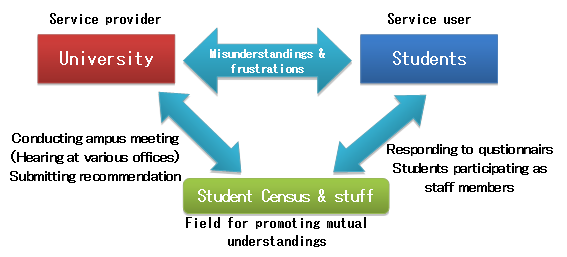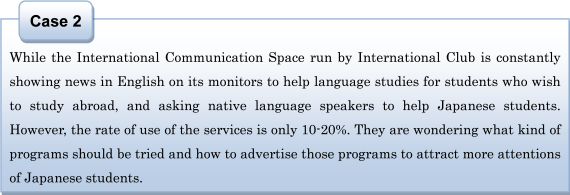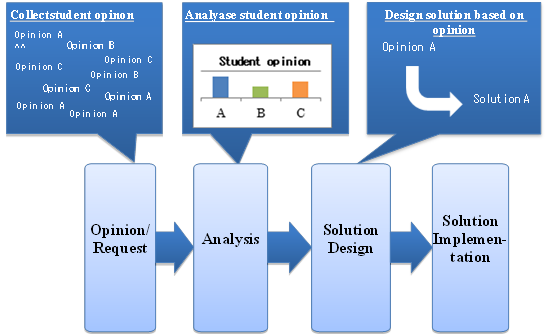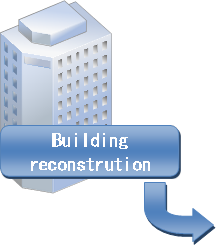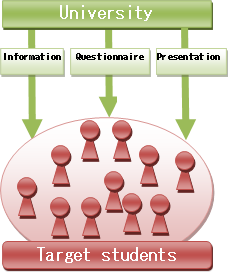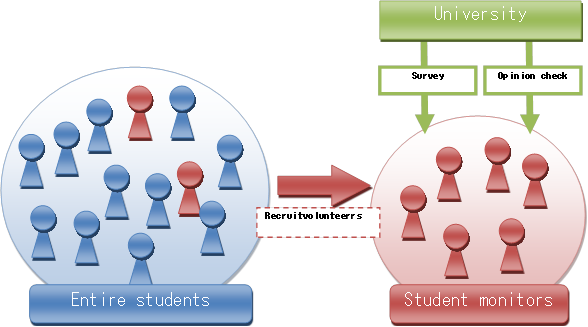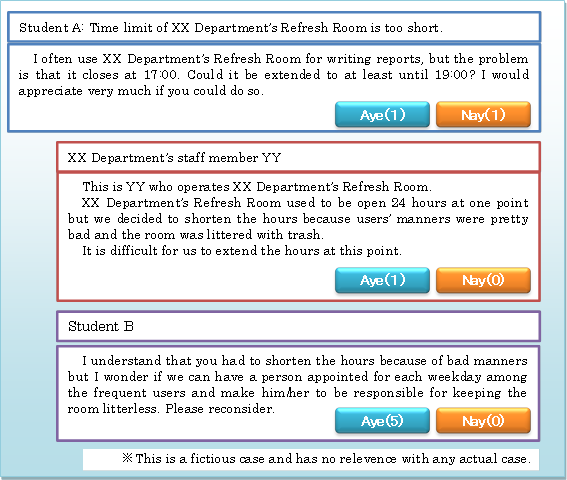
|
|||||||||||||||||||||||||||||||||||||||||||||||||||||||||||||||||||||||||||||||||||||||||||||||||||||||||||||||||||||||||||||||||||||||||||||||||||||||||||||||||||||||||||||||||||||||||||||||||||||||||||||||||||||||||||||||||||||||||||||||||||||||||||||||||||||||||||||||||||
|
Abstract/ Graph/ Question/ University's Response/ Japanese |
|||||||||||||||||||||||||||||||||||||||||||||||||||||||||||||||||||||||||||||||||||||||||||||||||||||||||||||||||||||||||||||||||||||||||||||||||||||||||||||||||||||||||||||||||||||||||||||||||||||||||||||||||||||||||||||||||||||||||||||||||||||||||||||||||||||||||||||||||||
|
Recommendation from Student Census 2010 March 2011 By All Student Survery Staff Members Table of Contents 3 Key Recommendations Applicable to All Sectors 4 Outline of of Recommendations on Specific Items
1 IntroductionIt was the third time for us to conduct this Student Census, and we are proud to report to you that the survey has been instrumental in introducing better systems and resolving frustrations of students. It has been and will continue to be appreciated as a meaningful tool by the university as well as its students in improving this academic environment of ours. In preparing this recommendation, we, the student staff members did our best in honoring the opinions of every student who responded in the survey in order to reflect them as closely as possible in the recommendation. In preparing the recommendation, we conducted numerous discussions and open meetings in the campus simultaneously obtaining many advices from our faculty members as well. We hope you read this recommendation with the understandings of such a background and basic intentions to appreciate as much as possible. The entire staff members wish to express our deepest gratitude to all the faculty members and students who helped us in preparing this recommendation of Student Census 2010.
2 Summary of Student CensusStudent Census is a survey of students intended to improve educational programs, facilities, and general services throughout the university using questionnairs that ask specific questions to and collecting answers from students in order to make TokyoTech a more attractive place of learning. Student Census is an initiative unique to TokyoTech, and is named using an analogy from population census of a nation. After a trial in 2004, Student Census is officially conducted for the first time in 2005 as a system for the students to analyze themselves and make recommendations to the university. Student Census 2010 is the third survey, and the opinions of students in the past two surveys played a big role in communication between the students and the admistration of the university. The total number of students who responded in the current Student Census (hereinafter referrred to as “Current Student Census“) is twice as many as in the same survey conducted in 2005, and the largest ever in this survey (total number of responding students 2,343 relative to the total number of students of 9,588 consisting of 4,850 undergraduate students, 3,484 master course students, and 1,524 doctor course students). See Fig. 1-1. Especially notable in the current Student Census was the increase of responses from international students, thanks to the agressive approoach to international students.
Fig. 1-1 Trend in Number of Respondents in Student Census In a conventional student life survey, lives and opinions of students are surveyed by university faculty members to be reported to the universiy in order for the report to be reflected upon the policy of the university. Under such a method, the university may end up introducing new services and facilities without accurately grasping the opinions and behaviours of the students, so that the new services may not respond to what the students really wanted. On the contrary, in our Student Census, the survey is not only executed, but also designed and prepared by the student staff members by themselves. Since our census has more tighter bond between the survey result and the improvement plan compared to the conventional survey, the university can provide a service that matches the students‘ request. What we have accomplished so far includes refurbishing of lecture halls, installation of electronic bulletin boards, improvement of the refresh room, and instroduction of a convenience store. Moreover, the faculty seems to have better understandings of students’ needs so that the survey seems to playing a role of minimizing the mismatches of understandings between the faculty and the students and strudents’ frustrations. Fig. 1-2 shows the relative roles of the university, students, Student Census and staff.
Fig. 1-2
Relative
Roles of University, Students, Student Census, and Staff 3 Key Recommendations Applicable to All SectorsOutline of the Recommendations One of the geneeral tendencies noticed in the survey was “the lack of communications between the students and the university. This was noticed already in the Student Census 2008, and a recommendation for improvement was made. As a result, some improvements were nticeable in the area of information delivery from the university to the students. However, it was also learned that there still remain problems in recognizing each other’s positions between the university and the students. In order to solve the problem, we believe it is necessary to build a system that facilicate the students to express their opinions and to find means of grasping needs of the students and promoting mutual understandings. Analysis of the Curent Situation Various facilities have been added based on the previous Student Census. Unfortunately, however, it was learned through the current Student Census that some of those facilities are not effectively used. The following are the examples of the probems we found.
Fig. 1 Cases where poor communications among students resulting in poor usages
We see here that the system installed based on the students’ opinns is not functioning properly as it was installed without accurately grasping the students’ needs as in Case1, or that the good intention is not materialized because of the lack of the necessary system although the university wants to fill the students’ needs as in Case 2. In order to fix these problems, it is necessary to construct a method of incorporating the students’ opinions more efficiently. Mismatch between the university and the students can be avoided to collect more specific opinions; for example, not just to hear the opinion “XX thing is needed” but rather where and in what form it has to be provided. In addition, it is important for the university to be able to collect and accumulate opinions of the students more easily and timely. Next, we will compare the current Student Census with Student Census 2008. In Student Census 2008, we focused on two points, “information delivery from the university” and “incorporation of information from students,” and we proposed an improvement plan for the information delivery from the university. In contrast to that, we focused on the incorporation of infromation from students in the current survey. ·Elimination of confusion due to the inquiry service In this proposal, an idea was proposed to converge all the inquiry portals into one central portal so that it would be easy for the students to inquire. In response to this proposal, the Q&A List is now open on the university’s web page for everyone to see, but the centralization of the inquiry portals has not occurred yet. During the current Student Census, we asked the administration department if Kyomu-ka and individual faculty departments can have an integraqted portal and we were told it is difficult to do so for the time being. (Please refer to our recommendation concerning this issue on Page 13.) ·Incorporation of students’ opinions with the help of student supporters We now have a variety of student support programs related to various services and facilities of the university including library supporters, peer supporters, foreign student tutors, energy saving supporters, and Student Sensus staff members as listed on Table 1.
Table 1 List of Supporters and Outline of Their Duties
As you can see, areas in which the students can support the operation of the university are increasing and the university is trying to incorporate students’ viewpoints in the management. However, the supporters’ roles in many cases are still nlot much beyond simple part-time jobs and “incorporation of students’ opinioins” is yet a target in distance. On the other hand, these activities can contribute in accumulating know-how and clearly defining role-sharing as they are continued and eventually may bring important changes in the system, so that we should have a long range view in evaluating them.
·Mechanism of students’ feedback to the university Although a recommedation was made as a result of the Student Census 2008 to establish a mechanism to continuously monitor and collect students’ opinoins but it has not been materialized.
Thefore, we have to conclude that “incorporation of students’ opinons” has yet to be achieved. However, it seems that we need to be patient with some of those supporter jobs as they may take some time to materialize or show effects.
Specific Recommendations In order to solve the problems shown above, the following two points are the keys. (1) Students participate in grasping the students’ needs and designing of the system (2) Continuity
(1) Students participate in grasping the students’ needs and designing of the system For the moment, studnets’ opinions and requests are collected and analyzed by the university to design and implement its policies as shown below. Under the current system, however, not much considerations are given to the students’ real needs and ease of use of the implemented solutions, so that the solutions are not fulfilling the true needs of the students. We believe that opinions based on students’ viewpoints should be integraqted into the design of the solutions so that more effective solutions can be achieved. The conclusions of Student Census should be a part of it, and be included in more specific stages.
Fig. 2 Image
Diagram for Solution Implementation Diagram (2) Continuity Since Student
Census is done every other year, it is difficult to collect students’ opinions
timely or to feed back students’ opinions as to whether or not the solutions
provided by the university based on the recommendations match students’
needs. We believe a system for continuously collecting students’ opinions can
solve the aforementioned problems, and the university can store those opinions
as database for future use as well. Based on the
above concept, we wish to propose the following: ·Preliminary
Survey and Presentation We will disclose
the information on a facility being planned by the univesity on the Web and conduct
a survey to solicit opinions of students asking them to submit within a certain
period (e.g., 2 weeks). This will serve not only as a conduit to let the
students know about the facility installation plan but also to solicit the
[students’] opinons so that we can make sure that the new facility matches with
their true needs, or improve the plan. (The reason that we are using the square
brackets as [students] is because there is a time lag between the students who
provide opinions and the students who will actually benefits from the new
facilities. The timelag is inevitable particularly in case of a long range
plan, but we see that it is still necessary for us to solicity opinions from
students.) Once the project
is kicked off, we will have a presentation meeting in order to let the people
who will be actually using the facility fully understand the reason for the implementation,
the merits, and the method of use. This should minimize the risk of complaints
of the users to be caused after the facility is completed and also give us a
chance to improve the operation of the facility.
Fig. 3
Image Diagram for Preliminary Survey & Presentation ·Student Monitor We will select a group of student monitors who are to be registered. When the university wishes to install something new or correct a problem, the university can always check their opinions for references. More specifically, we will recruit student monitors and prepare a special mailing list of them. Whenever the university wishes to check students’ responses, the university can conduct a survey or send invitations to the monitors for an opinion exchange meeting. Another possibility is to have a monthly occasion of getting-together to check their opinions periodically. a While this method provides a meas of quickly and securely check the opinions of studtents ever for minor subjects, it has shortcomings that the opinions will always be confined to those of a relatively small group of students, so that its use may have to be limited.
Fig. 4 Image Diagram of Student Monitors
·Opinion Exchange Portal This is to install a bulletineboard system on the Internet on which students can submit opinions and requests to allow everyone to watch the tendency of opinions and the responses of the university. More specifically, the system will allow students to submit opinions and question, various departments of the university to respond to them, and other students to submits further responses as shown in Fig. 5. By providing “Aye” and “Nay” buttons to each opinion, attentions of other students can be measured. We believe that the use of such a system to collect opinions from students and feed back the opinions to the policy of the uinversity may allow the policies to be developed closer to the students’ views. Even if the university cannot meet the students’ request, it can still minimize the mismatch between the university and the students by explaining the reason why. In implementing such a system, we believe that it would require to prevent vandalisms and destructive actions by causing it to require to log in through TokyoTech’s portal, or enable to post using handlenames, or the uniersity to check the contents of posts.
Fig. 5 Image Diagram for Opinion Exchange Portal
Each of these specific plans has its own characteristics so that a combination of them will make it possible to achieve policies that match with students’ viewpoints. For example, when the university decides to create a new building, it would be effective to have a preliminary survey and a presentation as the students who will be affected can be well defined. If a fair is to be held for the promotion of students to study overseas, it may be a good idea to consult with student monitors in advance to achieve a more efficient public relation activities. On the other hand, it may be difficult for the uniersity to survey the complaints concerning the exisiting facilties such as Refresh Room so that we believe that it may be better for the university to plan a policy based on the opinions submitted to the opinion exchange portal or to let the policy known to the students.
Fig. 6 Characteristics of Each Specific Plan
We blieve that the existing problemts can be solved by these recommendations. However, the key is that praticiparions of students paricipate to designing of these systems in order to achieve result satisfactory tor both the uniersity and the students. Moreover, even after the systems are installed, it is important to continue to endeavour to let the students know about how these systems work.
4 Outline of of Recommendations on Specific Items
| |||||||||||||||||||||||||||||||||||||||||||||||||||||||||||||||||||||||||||||||||||||||||||||||||||||||||||||||||||||||||||||||||||||||||||||||||||||||||||||||||||||||||||||||||||||||||||||||||||||||||||||||||||||||||||||||||||||||||||||||||||||||||||||||||||||||||||||||||||
|
|||||||||||||||||||||||||||||||||||||||||||||||||||||||||||||||||||||||||||||||||||||||||||||||||||||||||||||||||||||||||||||||||||||||||||||||||||||||||||||||||||||||||||||||||||||||||||||||||||||||||||||||||||||||||||||||||||||||||||||||||||||||||||||||||||||||||||||||||||
|
2010 Tokyo Institute of Technology |
|||||||||||||||||||||||||||||||||||||||||||||||||||||||||||||||||||||||||||||||||||||||||||||||||||||||||||||||||||||||||||||||||||||||||||||||||||||||||||||||||||||||||||||||||||||||||||||||||||||||||||||||||||||||||||||||||||||||||||||||||||||||||||||||||||||||||||||||||||
|
|
|||||||||||||||||||||||||||||||||||||||||||||||||||||||||||||||||||||||||||||||||||||||||||||||||||||||||||||||||||||||||||||||||||||||||||||||||||||||||||||||||||||||||||||||||||||||||||||||||||||||||||||||||||||||||||||||||||||||||||||||||||||||||||||||||||||||||||||||||||
|
|
|||||||||||||||||||||||||||||||||||||||||||||||||||||||||||||||||||||||||||||||||||||||||||||||||||||||||||||||||||||||||||||||||||||||||||||||||||||||||||||||||||||||||||||||||||||||||||||||||||||||||||||||||||||||||||||||||||||||||||||||||||||||||||||||||||||||||||||||||||

